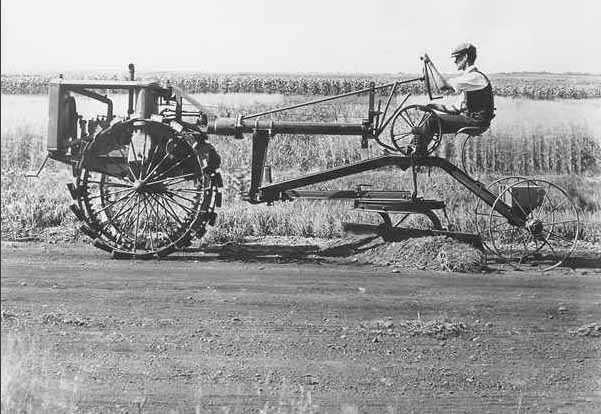Then and Now
Graders have been around since the early horse drawn days. These early graders were mostly a blade that moved up and down mounted to a wagon.
J.D. Adams is credited with the birth of the modern grader in 1885. Adams realized that the current graders had difficulties spreading material on slopes. His new design provided wheels that could be adjusted to lean over allowing the grader to hold a slope better.
In 1903, Richard Russell and C.K. Stockland produced a horse-drawn elevating-type grader with a gasoline engine to drive the conveyor.
When the automobile became popular, it created a demand for better road maintenance systems. At this time, to meet this need the larger tractor-drawn graders were then developed.
Around 1919, Russell Grader Manufacturing Company introduced the first self propelled hand controlled machine.
With the creation of high powered tractors in the mid 1920’s, the use of hand controls became very dangerous and Powered controls became used on most graders. Galion developed one of the first hydraulic power grader systems in the 1920's.
Although most manufacturers used mechanical systems to control blade functions, companies like Galion and Huber pioneered the use of hydraulic controls.
It took many decades for manufacturers to change over to hydraulics. Caterpillar did not change to hydraulics until the G series in 1973.
The tractor engine and transmission were located in the rear of the frame, and the operator cockpit was located near the center of the machine. Used on both pull-type and self propelled graders, this hydraulic system was one of the first to be applied to grader controls.

